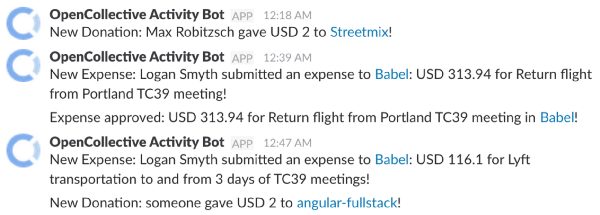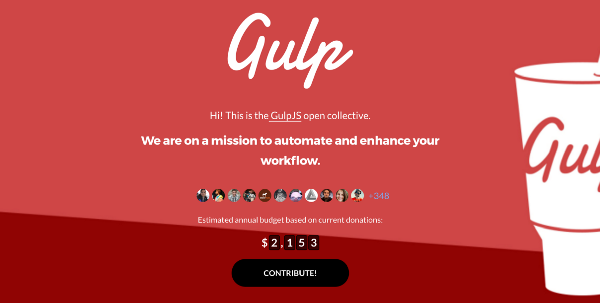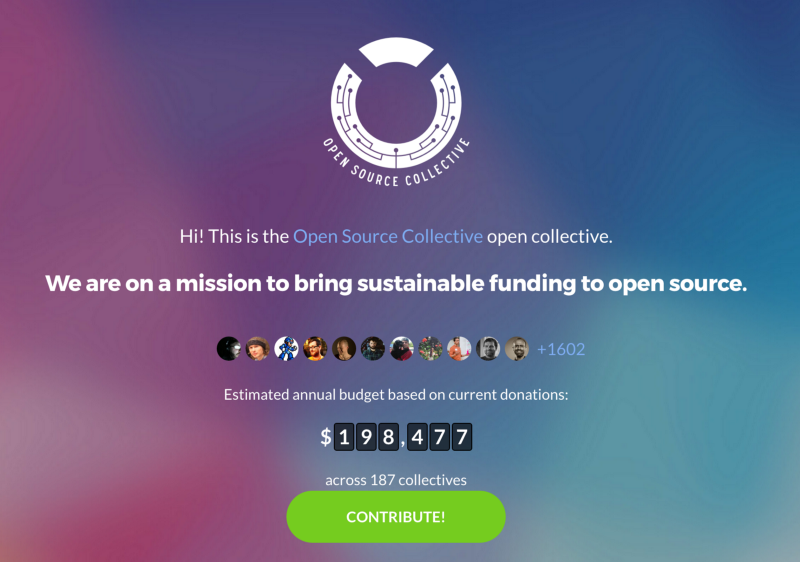Ten Steps to Successful Open Source Crowdfunding
So, you’ve found Open Collective and your open source project is ready for community financial support. Great! Here’s how to nail it.

So, you’ve found Open Collective and your open source project is ready for community financial support. Great! Here’s how to nail it.

Before You Launch
1) Involve your community.
Open Collective is designed to fund collaborative communities, because that’s how open source is built. So it’s important that your key contributors feel like it’s theirs. Because it is!
Start a discussion wherever your community hangs out, to let people know what to expect and give them a chance to share their ideas and concerns about raising money. If contributors feel a sense of co-ownership with fundraising, like they do with the codebase, they will be your first donors and most passionate champions.

Pro tip: Receive Open Collective Notifications in your Slack or Gitter, so participants can see when you get donations and pay for expenses. Here’s how.
2) Clarify your mission.
Have you ever sat down and very succinctly articulated why exactly your project exists, and what it offers the world? Can you explain your mission in one paragraph? How about one sentence?
Your collective page explains what you are going to do with the funding, your goals, and your roadmap. The better you communicate what you’re doing, the more people will support you. It’s ok if you’re not a marketing expert! You just need to be clear and honest about the value your project provides.
Here are some mission statements from active collectives:
We are on a mission to raise the bar for web performance and developer experience. With one tool.
— Webpack
We are on a mission to provide a framework for clean code, easy debugging experience, and fun.
— Cycle.js
3) Ready your champions.
Early momentum is important in crowdfunding. People like donating to projects that other people are also supporting, because they want to have collective impact. Reach out to your potential funders before you launch, and ask them to donate on the first day to get the ball rolling.


Design your collective page to feel familiar to your community, with your project’s branding and personality. Make it a welcoming place for your early backers to arrive.
Pro tip: Customize your Open Collective page, like Grav and Gulp above. Once logged in, you can hover over elements to edit them.

When You Launch
4) Publish a blog post.
Launching your collective is exciting news for your project. Write a blog post so people know what’s going on, and so people have a link to share. (Examples: Webpack, Hoodie).
Explain what you do, why you’re raising money, and how people can donate. Address any concerns people might have. This is a great opportunity to celebrate your community and paint a picture of what funding could make possible in the future.
5) Offer a menu of contribution options.
List the different ways people can contribute to your project on your website and README, donating money being one of them. The more options available, the more people can participate.
Some contribution types that might be relevant for your project:
- Report bugs & test new releases
- Submit patches/features or make plugins
- Create/update help docs or video tutorials
- Answer questions on the chat/mailing list
- Help ensure everyone’s following the code of conduct
- Follow/like on social media
- And (of course) donate financially!
(Check out QubesOS’s contributing page for a great example.)
Pro tip: Put a link to your collective wherever people might be looking for ways to support you, such as a ‘contribute’ button in your website footer.
6) Celebrate your backers and sponsors.
Feature your community of contributors proudly, on your website, social media, and your repo. You can connect your Twitter account and automatically thank donors.
Pro tip: Open Collective will submit a PR to add backers and sponsors to your README when you get set up, and you can add them to your website with this widget.
7) Get the word out.
Many people need to hear about something new through a few different channels to get inspired to act.
Tweet about your collective and encourage donors to share on social media. Submit your blog post link to forums where your users and supporters congregate. If you have a mailing list, send out a special update.
You might want to consider using a tool like Thunderclap to create critical mass. If your community hosts meetups, plan one for the day you launch — make it a party!
Pro tip: Open Collective has built-in ticketing, so sales can go straight to your collective budget. Example: SustainOSS on June 20 in SF (Hey, you should come!)

After You Launch
8) Reach out to potential sponsors.
Having lots of small donors is great for community building, but big budgets are usually funded by companies giving larger amounts. An Open Collective page helps your pitch by showing your enthusiastic and active community and clearly stating your mission.
What businesses rely on your project? Who might be harmed if your project wasn’t being maintained as well? These companies will have a real interest in your continued success.
What can you offer sponsors? There may be opportunities in addition to the obvious benefits of keeping your project healthy and featuring their logo on your page, like amplifying hiring and recruitment messages to your community, or providing premium support and training.
Pro tip: Remember, it’s about setting up a mutually beneficial value exchange. A great sponsorship relationship is a win-win.
9) Submit expenses (aka: spend money)!
Financial activity is what brings your collective to life! Open Collective is transparent, so transactions show automatically on your page. Seeing expenses paid regularly keeps backers informed, builds trust, and inspires more people to donate.
People donate because they want you to use their money to power up the project. So get proactive! Print stickers and other merch, cover costs associated with conference talks, and financially support people who make key contributions.
Think about your community’s priorities for the project, and how money could help. For some projects it’s about code, but for others it’s more about community support, documentation, and outreach.
If you’re not sure what’s most important to your community, ask them!
10) Keep engaging.
Celebrate your backers and sponsors whenever you can. Tell stories about what their financial support has made possible. Listen to feedback about what tiers funders want and update your offerings. Set funding goals, and describe what that next level could look like when you reach it. Your collective will keep evolving, just like your community and project. So keep listening, learning, and sharing.
Pro tip: You can send out updates to your backers via email, using backers@collective.opencollective.com — keeping in touch will make them feel appreciated and engaged.
Have questions? Join our Discord, alongside lots of other open source maintainers. We’d love to hear about your experiences — we’re here to help!

See for yourself how lots of open source collectives are fundraising right now!

